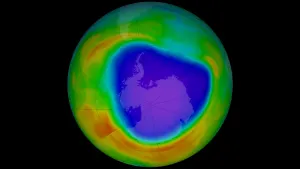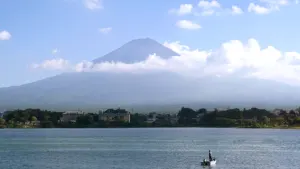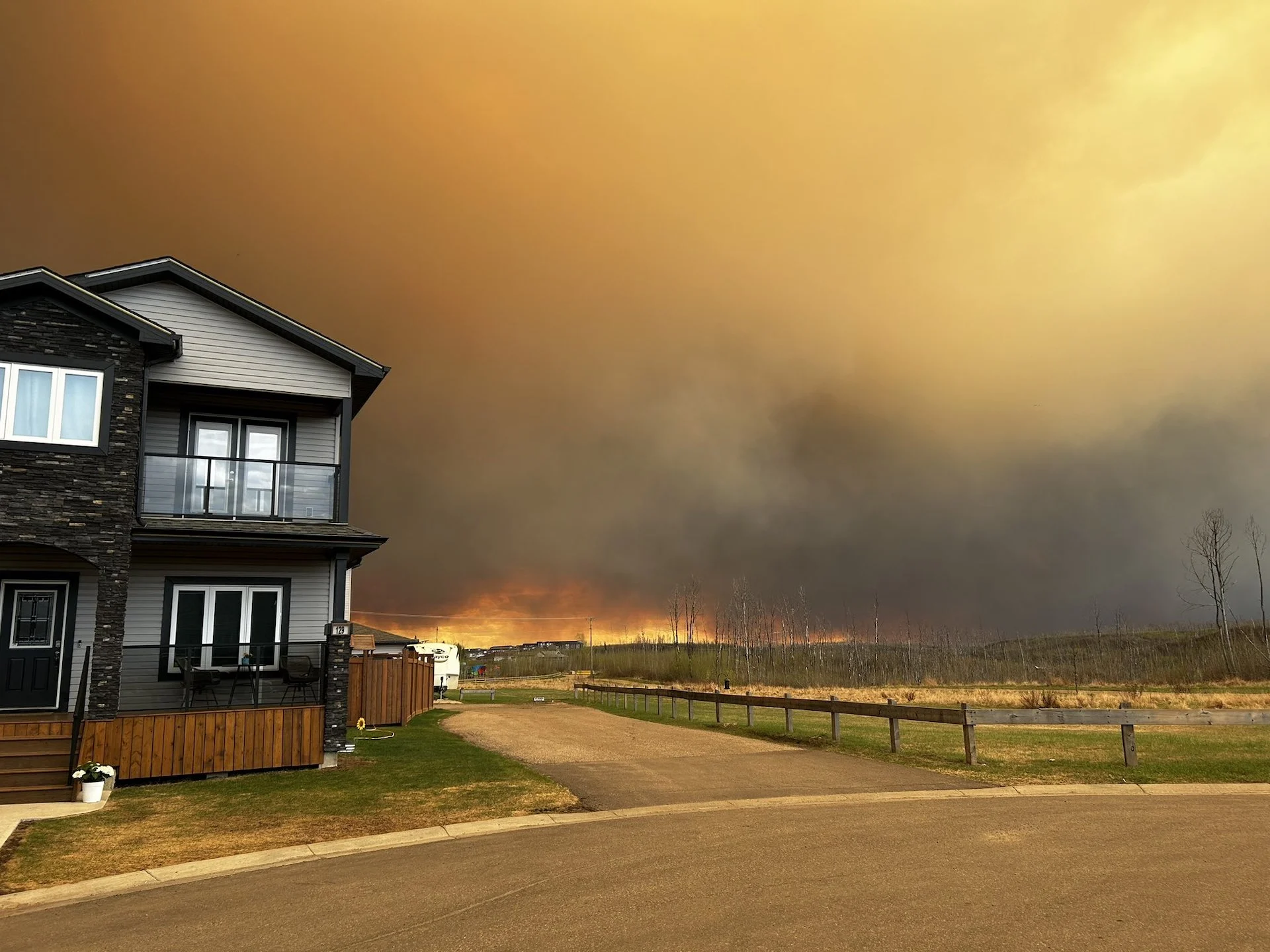
Evacuation order issued as wildfire threatening Fort McMurray draws closer
CANADA'S WILDFIRES: Visit The Weather Network's wildfire hub to keep up with the latest on the active start to wildfire season across Canada
Thousands of residents in the Regional Municipality of Wood Buffalo have been ordered to leave their homes as a wildfire burning southwest of Fort McMurray continues to draw closer to the community.
Several neighbourhoods in Fort McMurray are being evacuated to make way for firefighters. The Regional Municipality of Wood Buffalo issued the evacuation order Tuesday afternoon after declaring a state of local emergency.
The evacuation order is in effect for the neighbourhoods of Beacon Hill, Abasand, Prairie Creek and Grayling Terrace.
A wildfire threatening the community has now consumed more than 11,000 hectares as shifting winds and rising temperatures continue to accelerate its growth and push the flames closer to the municipality.
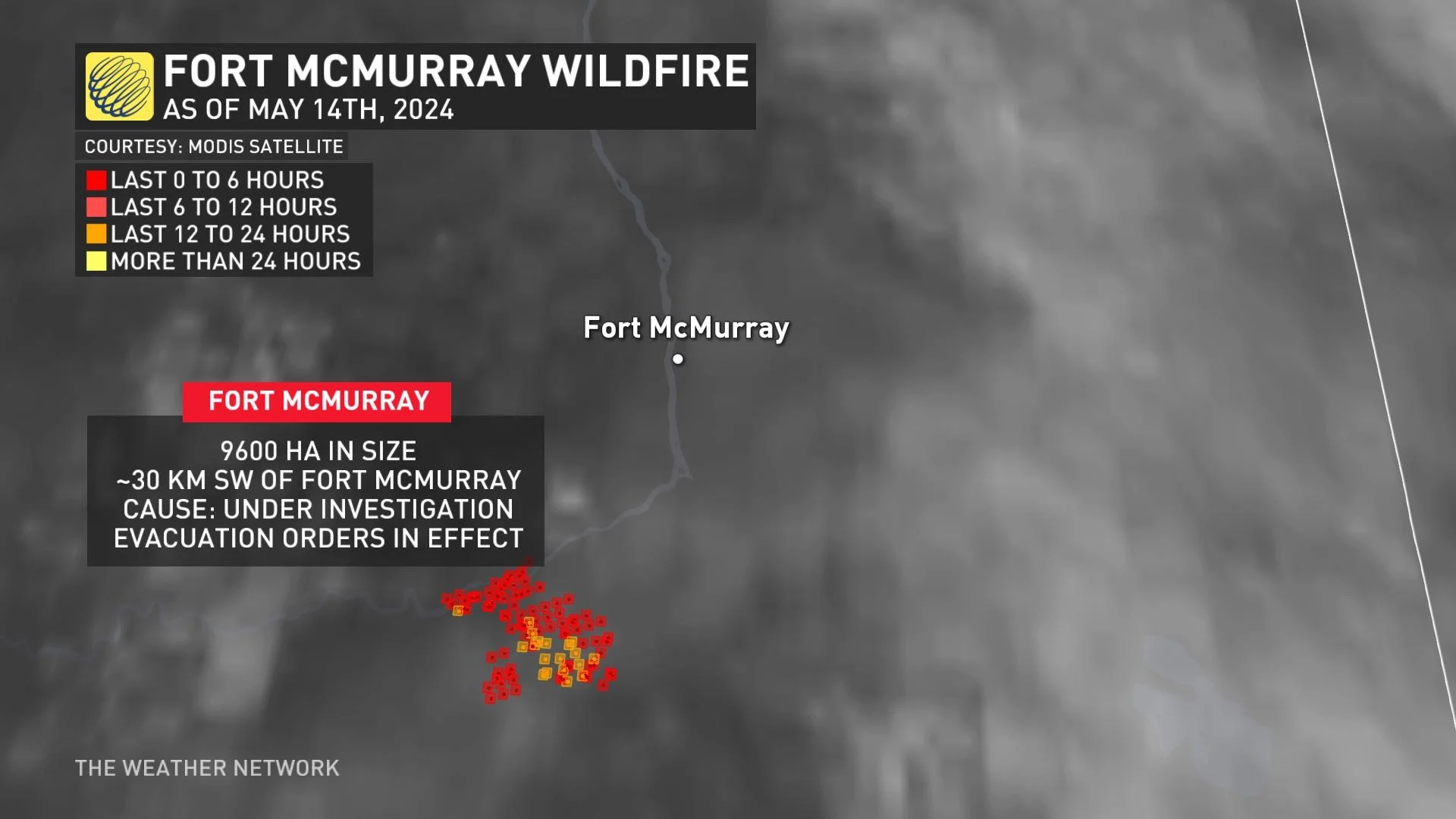
All 6,000 residents in the evacuation zone were ordered to leave by 4 p.m. MT, the municipality said.
Local roads and highways were choked with vehicles Tuesday afternoon as residents fled south.
People who are unable to evacuate themselves are being asked to report to designated muster points, where transit buses will be on standby to bring evacuees and their pets to safety.
Different than 2016
Officials say the fire threatening Fort McMurray is a different kind of beast from the 2016 wildfire that devastated the community,
Jody Butz, the regional fire chief, told reporters Tuesday afternoon the current fire behaviour is extreme but less volatile that what was seen years ago when the entire community was forced to flee.
Unlike the 2016 fire, the flames encroaching on the community now are not part of a crown fire, Butz said. Crown fires move rapidly through the treetops and tinder dry fuels.
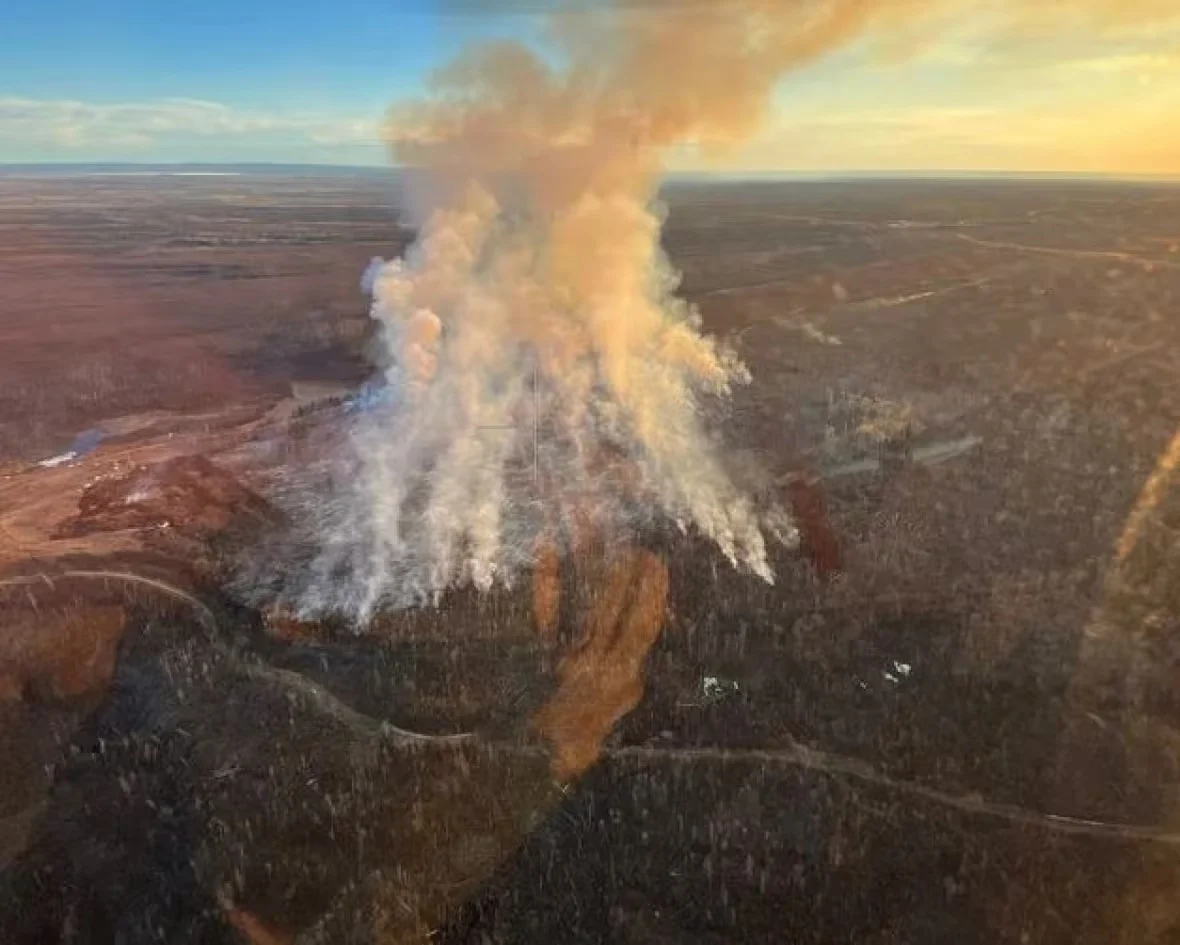
An aerial image of a wildfire southeast of Fort McMurray that threatened the community of Saprae Creek Estates in April. (Alberta Wildfire)
Instead, the current blaze is a ground fire that is moving low and more slowly through previously burned areas, giving fire crews a better chance of subduing the flames, Butz said.
"The fuel that was there, it's different," he said. "All the dead and downed trees that were that were there, that's what's being burnt right now along with some dry grass.
"It's a surface fire and it's running along the surface in these extreme conditions."
The neighbourhoods under evacuation are most at risk.
Crews will be better able to defend these areas if they are empty and inhabited, Butz said. Many of the neighbourhood streets now under evacuation were devastated by fire in 2016 — Abasand and Beacon Hill were among the hardest hit.
MUST READ: Essential items for your emergency "grab-and-go" kit
Officials are urging residents to remain calm as fire crews again prepare to descend on the community.
"We are confident that we have the resources to defend these areas but we need people out of harms way," Butz said.
Josee St-Onge, a spokesperson with Alberta Wildfire, said the fire has grown since it was last measured and has continued to advance toward the community.
The fire is now around 8 kilometres from the landfill on the southern outskirts of Fort McMurray, she said. The scale and intensity of the fire has made it difficult to track and to manage.
"We're seeing extreme fire behaviour," she said. "Smoke columns are developing and the skies are covered in smoke. Firefighters have been pulled from the fire line for safety reasons."
Winds are blowing from the southwest, gusting up to 40 kilometres per hour. The fire will continue to grow toward the community until those winds shift, she said.

Wildfire near Fort McMurray, Alberta, May 10, 2024. (Government of Alberta)
"Unfortunately, these are not favourable winds for us and the fire will continue to advance towards the town until we see a wind shift," she said.
"We understand that this is a very stressful time for the community. I want to assure everyone that we are doing everything we can."
An evacuation alert remains in effect for Fort McMurray, Saprae Creek, Gregoire Lake Estates, Fort McMurray First Nation #468, Anzac, and Rickards Landing Industrial Park. People in these areas should be prepared to leave on short notice if the risk from the fire escalates.
Residents not in the evacuation zone are being encouraged to remain in place to allow for a safe evacuation of neighbourhoods most at risk.
Parched, hot weather continues to fuel extreme, high-intensity conditions across northern Alberta.
Fifty wildfires are burning across the province, including two out-of-control fires: the one encroaching on the Regional Municipality of Wood Buffalo and another threatening homes in the County of Grande Prairie.
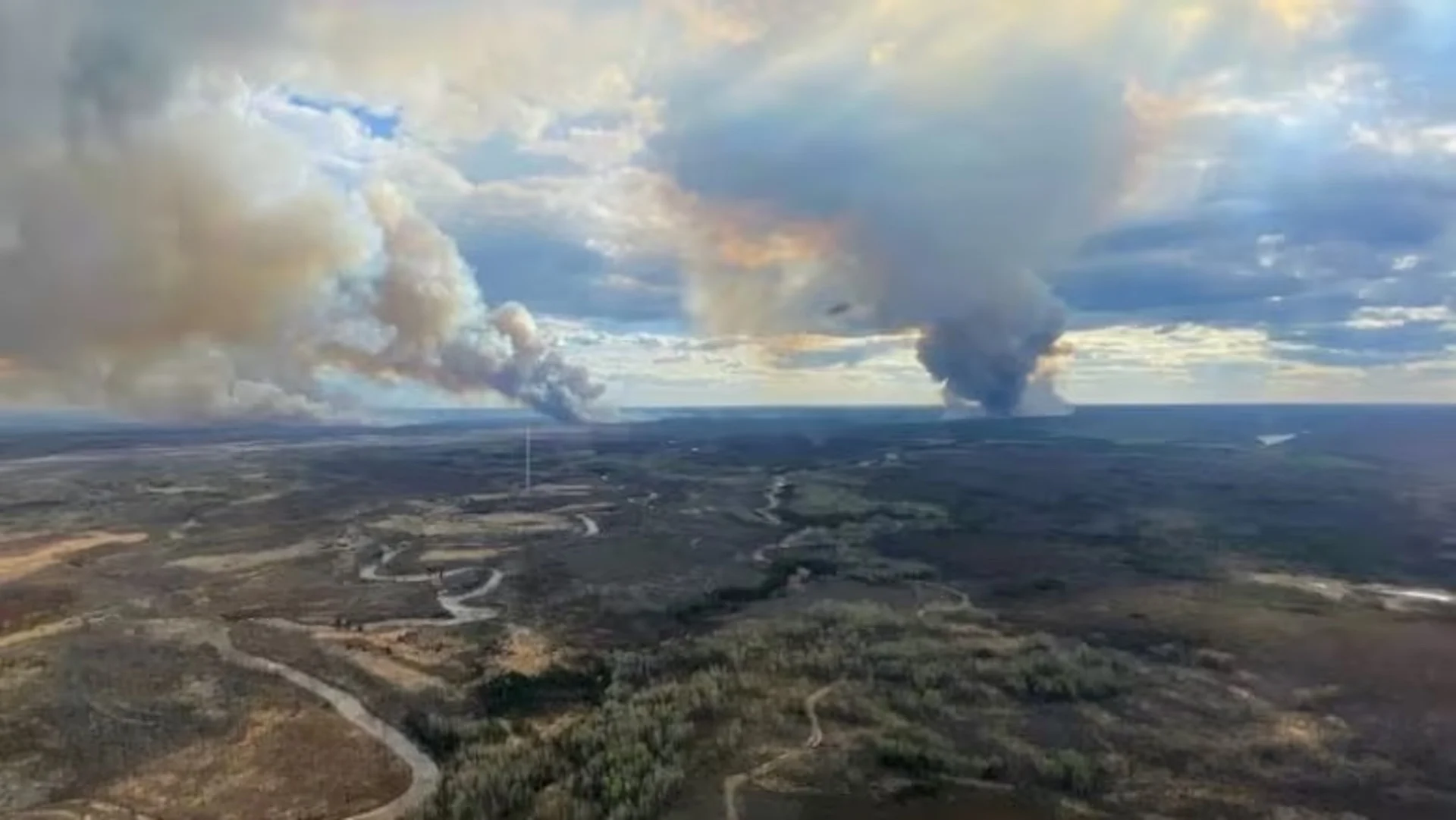
(Alberta Wildfire via CBC)
As of Tuesday afternoon, the Fort McMurray wildfire was about 13 kilometres from the intersection of highways 63 and 881, the only two highways that lead south out of the community.
Alberta Wildfire said the wildfire grew Monday when the sun came out and the humidity dissipated during the afternoon. Shifting winds also contributed to the growth "in multiple directions," the agency said
Columns of smoke
Blackened columns of smoke rising from the fire were visible over the community Monday evening. The air remains thick with ash Tuesday and residents have been warned that local air quality remains extremely poor.
In an update to residents, municipal officials said the location of the fire was to blame.

The wildfire threatening Fort McMurray grew rapidly on Monday, fueled by shifting winds. (Alberta Wildfire)
The fire has reached areas burned in 2016 when a wildfire swept through the community, triggering the largest evacuation in Alberta in history. The flames are creating a large amount of smoke as they move through these burn zones, the municipality said.
Emergency officials are hopeful that areas burned by the 2016 wildfire will act as a natural fire break, helping to protect the community from being devastated by fire twice. But there is also concern that strong winds could counteract that effect.
Officials were watching to see how the fires behave in the areas that were scorched seven years ago.
"Generally, when a wildfire hits an area that has already burned, there is less fuel available and it slows down," St-Onge said Tuesday morning.
"Today will be a good indication if that old burn will be able to help us."
WATCH: Wildfire smoke in Red Deer, AB
Crews were working on a containment line Tuesday. Heavy equipment crews are also working on a fire guard to the southwest of Fort McMurray and on the northern edge of the fire.
Helicopters and airtankers will be dropping water on the active edges of the fire. There are 70 firefighters and 14 helicopters currently assigned to the wildfire.
"This will be a challenging day for firefighters," Alberta Wildfire cautioned.
Thumbnail image credit to @superkosar/X, taken in Abasand, Alta.
This article, written by Wallis Snowdon, was originally published for CBC News on Tuesday, May 14.







